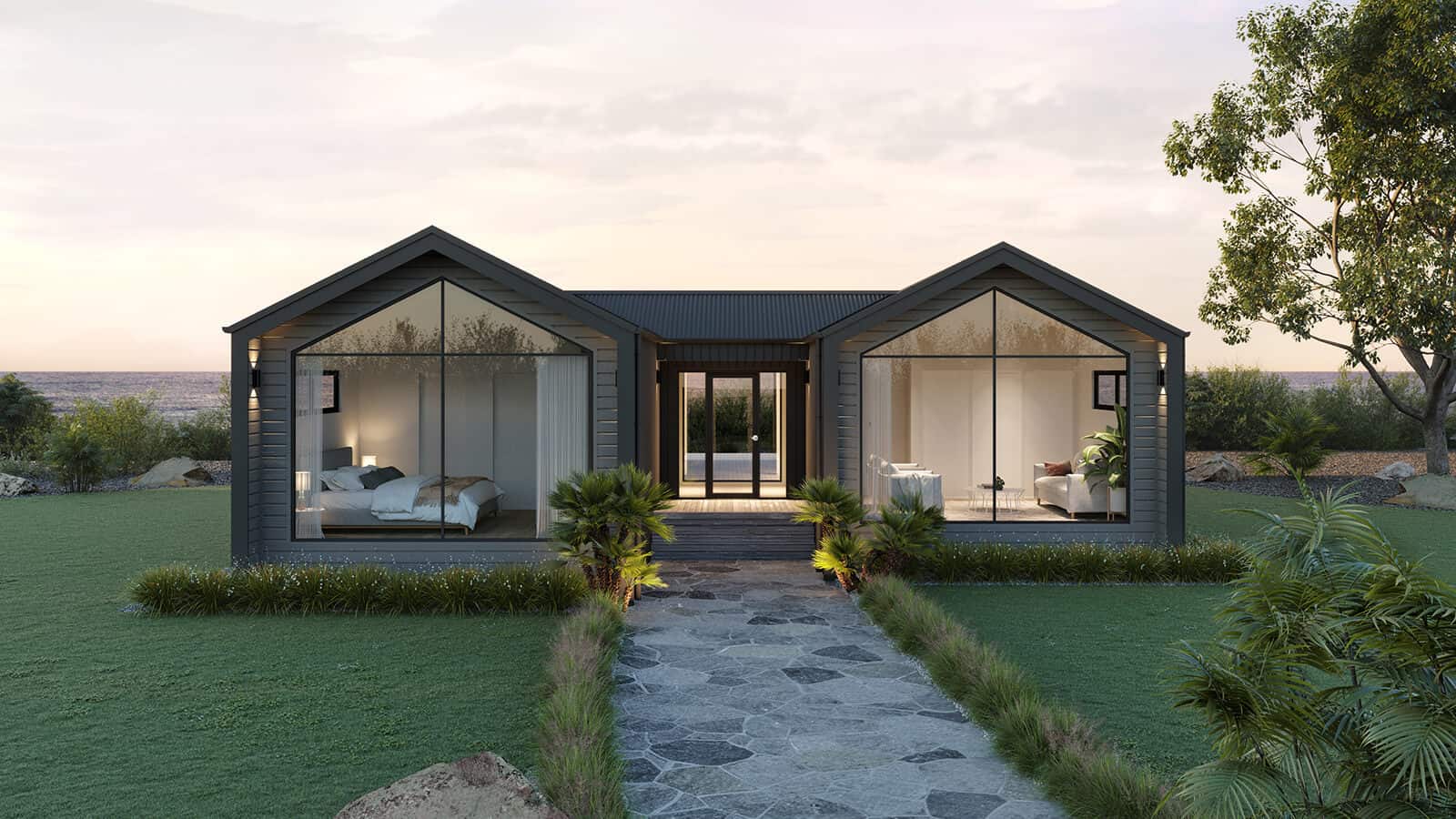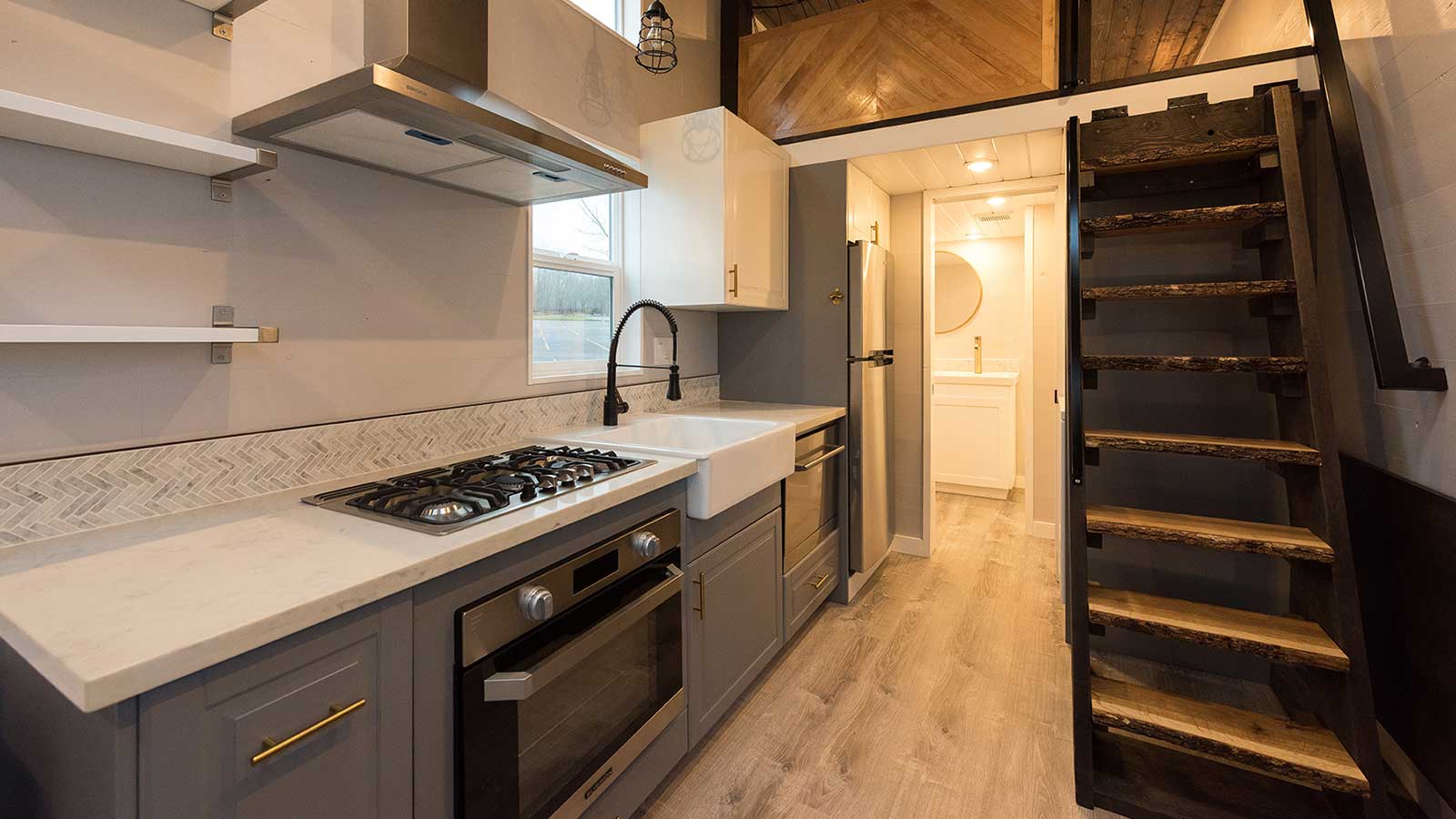Design and Functionality

Designing a two-bedroom tiny house presents unique challenges, as maximizing space and functionality within a limited footprint is crucial. Clever design choices and innovative layouts are essential to create a comfortable and efficient living space.
Space-Saving Techniques and Innovative Layouts
Space-saving techniques are crucial for maximizing functionality in a two-bedroom tiny house. Common design features include:
- Multi-functional furniture: Furniture that serves multiple purposes, such as a sofa bed, dining table that converts into a desk, or a Murphy bed that folds away when not in use.
- Built-in storage: Utilizing built-in storage solutions like shelves, drawers, and cabinets maximizes vertical space and minimizes clutter.
- Open floor plans: Eliminating walls and creating open spaces allows for a more spacious feel and visual flow.
- Loft bedrooms: Raising one or both bedrooms to a loft level frees up valuable floor space below for living areas.
- Compact appliances: Choosing compact appliances like a mini-refrigerator, stackable washer/dryer, and a small oven helps save space without sacrificing functionality.
Floor Plans and Layouts
Floor plans and layouts play a critical role in maximizing functionality and comfort in a tiny house. A well-designed layout can create a sense of spaciousness and ensure efficient use of every square foot.
- Open concept layout: This design often combines the living, dining, and kitchen areas into one open space, creating a sense of spaciousness.
- L-shaped kitchen: An L-shaped kitchen layout maximizes counter space and storage while creating a natural flow between the kitchen and living areas.
- Loft bedrooms: Placing bedrooms in lofts above the living area allows for a more spacious feeling on the main floor.
- Walk-in closet: A walk-in closet can provide ample storage space for clothing and personal belongings, especially in a two-bedroom tiny house.
Multi-Functional Furniture and Appliances
Multi-functional furniture and appliances are essential for optimizing space utilization in a two-bedroom tiny house.
- Sofa bed: A sofa bed serves as both a seating area and a bed, providing flexibility and saving space.
- Murphy bed: A Murphy bed folds away into a wall when not in use, freeing up valuable floor space.
- Folding table: A folding table can be used for dining, working, or entertaining, and can be easily stored when not in use.
- Stackable washer/dryer: A stackable washer/dryer unit saves space compared to a traditional side-by-side unit.
- Mini-refrigerator: A mini-refrigerator can be a great space-saving option for a small kitchen.
Building and Cost Considerations: Two Bedroom Tiny House

Building a two-bedroom tiny house is a rewarding experience, but it requires careful planning and consideration of various factors, especially budget. Understanding the different building methods and their associated costs will help you make informed decisions and achieve your dream home within your financial constraints.
Building Methods, Two bedroom tiny house
The method you choose for building your tiny house will significantly impact the overall cost and timeline. Here are the most common options:
- DIY Construction: This method offers the most control and potential cost savings, but it requires significant time, effort, and skills. You’ll need to source materials, manage the construction process, and ensure compliance with building codes. DIY construction is suitable for individuals with construction experience and a willingness to learn.
- Prefabricated Options: Prefabricated tiny houses come in various designs and sizes, offering a faster and potentially less complex building process. These houses are typically built off-site and delivered to your chosen location. While prefabricated options may be more expensive upfront, they can save on labor costs and reduce construction time.
- Professional Builders: Hiring a professional builder ensures a higher level of quality and expertise, but it comes at a higher cost. Professional builders handle all aspects of the construction process, from design and permitting to finishing touches. This option is suitable for individuals who prefer a turnkey solution and want to minimize their involvement in the building process.
Cost Breakdown
The cost of building or purchasing a two-bedroom tiny house varies depending on the chosen method, materials, location, and desired features. Here’s a general breakdown of the major cost components:
- Materials: The cost of materials can vary widely depending on the chosen building method and the quality of materials used. For example, using reclaimed or salvaged materials can help reduce costs. Consider the cost of framing lumber, insulation, roofing, siding, windows, doors, flooring, and interior finishes.
- Labor: If you’re not building the house yourself, you’ll need to factor in labor costs. The cost of labor will vary depending on the complexity of the construction, the location, and the experience level of the builder. Hiring professional builders will typically result in higher labor costs.
- Land Acquisition: The cost of land can be a significant expense, especially in urban areas. Consider the cost of purchasing land, obtaining permits, and preparing the site for construction.
- Other Costs: Other costs to consider include permits and inspections, utilities, appliances, furniture, and landscaping.
Budget Efficiency Tips
Maximizing budget efficiency is crucial when building a two-bedroom tiny house. Here are some tips to help you save money:
- Consider DIY construction: If you have the time and skills, DIY construction can significantly reduce costs. Consider taking on tasks that you’re comfortable with and hiring professionals for more complex work.
- Choose affordable materials: Explore cost-effective materials like reclaimed lumber, salvaged fixtures, and budget-friendly finishes. Consider using alternative materials like bamboo or straw bale for walls.
- Shop around for contractors: Get quotes from multiple builders and compare their pricing, experience, and qualifications. Negotiate pricing and consider package deals.
- Consider prefabricated options: Prefabricated tiny houses can offer cost savings by streamlining the building process and reducing labor costs. Research different manufacturers and compare their designs and prices.
- Look for affordable land: Explore options like rural properties, land with existing utilities, or land with zoning regulations that allow for tiny houses. Consider purchasing land in areas with lower property values.
- Prioritize essential features: Focus on essential features and prioritize comfort over luxury. Consider building a basic structure and adding features over time.
